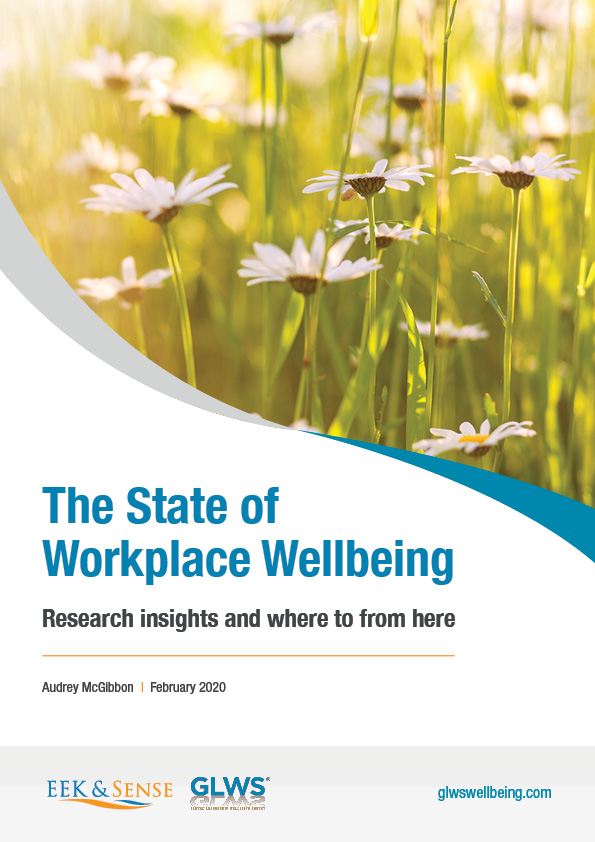How has workplace wellbeing evolved?
(We’ve rolled your responses into our findings, The State of Workplace Wellbeing Research insights and where to from here. More on that below.)
Since we started investigating the relationship between leaders’ wellbeing and peak performance back in 2013, we have noticed a significant positive shift in both the appetite for and focus of these conversations.
But it hasn’t always been this way. I’ve shared some real client stories below with you – de-identified, for reasons that will be obvious.
Back in the day when VUCA was in its infancy and denial around the benefits of workplace wellbeing abounded, we had to work really hard – and I mean really hard – just to get in front of senior leaders, let alone succeed in holding their attention.
Getting them to consider wellbeing as a strategic imperative, a performance and productivity tool, a powerful mechanism to enhance employee and customer experience was a lonely and frustrating journey. 😥😣
The reactions of two CEOs stand out in our memory some four years on from launching GLWS.
One CEO told us: “You must be mad if you think I’m going to let you loose asking my best leaders if they feel well, healthy and happy.”
The other: “What you need to understand, girls, is that so long as they are getting the results I need, I don’t give a rat’s [censored] if my leaders are happy or well.”
They were genuinely incredulous. Probably terrified we would open a can of worms – what if their people realised they were miserable, and they all left?! Clear cases of when ignorance is not bliss.
But to be fair, they were probably only voicing what we suspect many others were thinking.
These days, it’s hard to imagine even the least people-oriented, least empathetic leaders saying anything with such a tone. While the reasons for embracing wellbeing may still be more head (wellbeing has been proven to deliver strong economic results) than heart (the social outcomes), the nature of most conversations we have these days has evolved to a more accepting focus on the “How?” than the “Why?” of wellbeing.
Our changing experiences have provided the backdrop to this blog and were the catalyst for our Wellbeing Insights Research late last year. We wanted to explore four broad questions with you, to corroborate or challenge our thinking. These questions, simplified for the purposes of this article, are summarised as:
- How well educated are leaders about mental health and wellbeing?
- How well do leaders role model good wellbeing and mental health practices?
- How high up does wellbeing sit on leaders’ priority lists?
- Does wellbeing feature on the board/executive leadership team’s agenda?
Having now had the time deep dive into the responses from more than 130 wellbeing and leadership experts who provided their input into our research, we’re ready to share our in-depth analysis. We hope you’ll agree, the insights are enlightening. To those of you who responded and shared your thoughts, we truly thank you.
What can we do about all this?
So, what’s next?
Wellbeing is a compelling business imperative – a necessity for creating economically and socially thriving organisations.
The data is irrefutable – high levels of wellbeing are associated with all the positive measures of high performance a leadership team could dream of; productivity, engagement, profit, innovation, adaptability and more.
The reverse trend is just as strong – low levels of wellbeing are linked to all the organisational nasties; absenteeism, stress, burnout, workplace incivility, HR complaints, non-financial risk, culture and ethical problems.
(Download a neat infographic on all of this compelling data here.)
Anyone who continues to believe that wellbeing is woo-woo, or an exercise in social or political correctness, simply hasn’t done their research and is at risk of being left behind.
For those who get it – it’s time to unlock the power of leaders and companies who care.
So, what can we do about all this?
To help keep pushing the workplace wellbeing movement forward, we’ve concluded our research by identifying 4 key opportunities for us all to consider. Want to know what they are? Happy to oblige!
Add your name and email below to download our report The State of Workplace Wellbeing Research insights and where to from here.
(If you’re already a subscriber, you will still need to confirm your details to receive the download link)
See the GLWS™ in action now with a suite of sample reports
If you are a leader, or a coach working with leaders, you can find out how the GLWS works in practice by reviewing our suite of reports. Sign up here to get instant access.

